Speakers are the only bit of gear in your DJ setup that actually connects with your crowd. The right speakers can transform your set into an unforgettable experience, while a bad setup can empty the dancefloor faster than a bad song choice.
But finding the best DJ speakers isn’t just about cranking up the volume. You need to think about things like speaker type, power, frequency response, and portability—especially if you’re a mobile DJ. With so many options and tech specs out there, it’s easy to feel a bit lost.
That’s where this guide comes in. We’ll break down the must-know speaker tech, give you the lowdown on the best options for home studios, house parties, and big events, and help you make a choice that hits all the right notes. Whether you’re a beginner setting up at home or a pro needing serious sound for big gigs, we’ve got you covered.
But before diving into the recommendations, let’s go over some basic speaker science so you know exactly what to look for.
DJing Speakers Tech Cheat Sheet
Find out about all the speaker and tech jargon in our cheat sheet below!
Active vs passive DJ speakers
Active speakers are powered directly and do not need an external amplifier, whereas passive speakers need one to draw power from and get their EQ setting.
Active speakers are incredibly convenient for mobile DJs as they mean less gear to lug around and fewer wires to fiddle with! Passive speakers, on the other hand, are better suited to a club environment where there can be a rack of amplifiers to power the sound system.
Power (expressed in Watts)
How loud do your speakers get without distorting or losing sound quality?
Most manufacturers will indicate this by measuring the speakers’ power output in watts. The theory is that the more power your speakers handle, the louder they can get. The unfortunate thing is that the watts measured can relate to two different specs meaning comparing speakers can be tricky if you’re not considering the same criteria.
The two specs manufacturers can use to measure a speaker’s power watts are Root Mean Square (RMS) or Peak Power. The RMS spec is the continuous power given to a speaker from its amplifier, indicating how powerful a speaker is and how loud it will be. In contrast, the Peak Power spec shows the peak wattage a speaker can experience without damage, so it will only give you a vague idea of the speaker’s full volume potential.
Frequency Range and Bass Response
The human ear hears frequencies ranging from 20hz to 20,000hz (or 20Khz). Any music coming from a speaker will be playing within this frequency range. For our ears to feel as though they are getting the whole picture, a speaker will ideally play the entire spectrum of audible frequencies. If not, the sound quality will suffer, and it will sound as though something is missing. Take listening to audio from a smartphone’s loudspeaker, for example; they cannot produce low frequencies as their components are too small, so the sound you hear is ‘tinny’ or incomplete.
Human speech sits at around 200Hz-1,000Hz (or 1khz), so speakers are typically tuned to accommodate this frequency range, known as the midrange, as a priority. The more comprehensive the frequency response range a speaker has, the richer the quality and completeness of its sound. Most DJ speakers will output close to the entire spectrum of human hearing, meaning the music you play through them sounds as it should without any missing elements.
Some speakers, or subwoofers, specialise in creating low frequencies which sit below 200hz, known in the music industry as bass. The reason for these specialised speakers, or subwoofers, is that bass requires significant vibrations, which can only be created with a prominent bass cone. Bottom line, if you want big bass, you need big speakers!
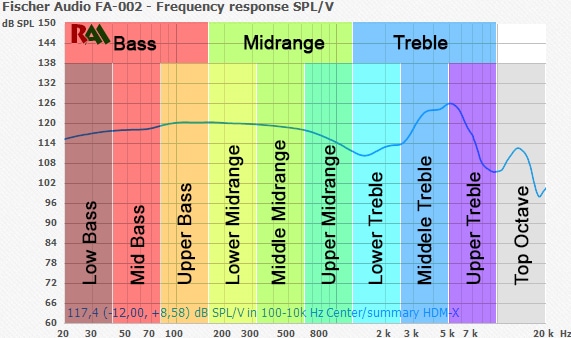
Two-way and three-way speakers
Different frequencies are taken care of by other drivers in a speaker. The more drivers a speaker has, the cleaner each part of the frequency response will be, resulting in a separated richness of sound. A two-way speaker has two drivers to create sound: a horn to take care of the midrange and high frequencies (treble) (200Hz – 20 kHz) and a subwoofer to take care of the bass. The subwoofer’s cone will be the speaker’s most significant component because, as mentioned earlier, bass requires more considerable vibrations than the midrange and treble. A three-way speaker is the same as a two-way but has an additional mid-range driver (200Hz-2kHz), freeing up the horn to take care of just the treble.
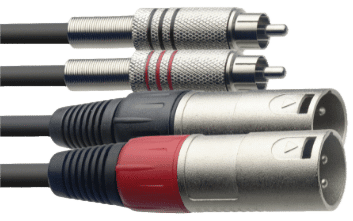
Two common DJ speaker connections – Top: RCA, Bottom: XLR
Balanced and unbalanced audio inputs
Unbalanced audio inputs are typically more susceptible to signal distortion or disruption if their signal is carried over long cable distances, resulting in an unwanted hiss or hum. Balanced audio inputs, however, have an inbuilt second copy of an audio signal within their cabling, designed to fight distortion and return audio to being crisp and clear when entering an amplifier.
Sources plugging into speakers from further away must be balanced. Nearby sources, which do not risk signal distortion on their relatively short journies, can be unbalanced. This is why CDJs and turntables connect to DJ mixers via unbalanced RCA cables, and larger speaker systems, which are not close to the DJ equipment, connect to them via balanced XLR jacks. Essential if your sound system is halfway down a field in Glasto.
Room treatment/ speaker placement
Your speakers only make up half of what it takes to get a great sound – the room they’re in makes just as big of an impact.
While it’s true that putting your speakers near a wall can boost the bass, it can also lead to a boomy, unbalanced sound. Instead, try to avoid placing speakers in corners, as this can make the bass sound muddy. A good rule of thumb is to position your speakers and yourself to form an equal-sided triangle – this helps with stereo sound and makes sure you’re sitting right in the “sweet spot.” If you can, keep your speakers at ear level so you hear the full range of sound properly.
You don’t need a fully sound-treated studio to get decent sound, but a few simple tricks can help. Adding soft furnishings like rugs, curtains, and cushions can reduce echo and make things sound clearer. Covering hard surfaces like windows or bare walls with fabric or foam panels can also stop harsh reflections. And if the bass is a bit much, bass traps in the corners of the room can help tighten things up.
If you’re a mobile DJ, you won’t always have the luxury of a perfect acoustic setup, but you can still do a few things to get the best sound. Speaker stands can help lift the sound and spread it more evenly, and it’s always a good idea to angle your speakers towards the crowd and away from reflective surfaces like windows. Many modern speakers also come with built-in EQ controls, which can help you adjust your sound to suit different spaces.
A few small adjustments to your setup can make a big difference, whether you’re practising at home or playing out at a gig. It’s all about finding the right balance to get the sound as clear and punchy as possible.

Best DJ Speakers: Top Picks for Every DJ Setup
The marketplace for speakers is vast; they come in all shapes and sizes to cater to all needs. Here we break down our favourites into a home studio, small and large systems. However, a speaker’s intended use is not set in stone. DJs may find that several different types and sizes fulfil their audio requirements, so they want to prioritise factors other than category, such as style, portability or accessories, when making their choice.
Home Speakers / DJ Studio Monitors
Starting small can be the best way to go. Most DJs in the industry will have begun with a bedroom or small room setup. For this type of environment, we’d recommend you use relatively small speakers, as they can still fill the space with decent sound without being overwhelming. For the bass response to be club-like in an environment like this, a 4 to 5-inch woofer will deliver satisfactory results. Active speakers are the best bet here as they don’t require space and additional cabling for an amplifier.
The speakers must be positioned close to you (near-field) and preferably at ear level for you to get the best results from them. Especially if you also intend to use these speakers as a producer, you may want to consider lightly sound-treating your room with acoustic treatment to soak up stray frequencies and stop unwanted bass amplification.
Active speakers of this size are often referred to as studio monitors and are typically built for music producers to monitor their productions with transparency and clarity. As such, they are fine-tuned to give a flat sound response, which will give you a clearer picture of what’s going on in your music and mixing. Some also include options for EQ settings to help you further tweak and adjust your speakers’ sound for the room you’re in.
Studio monitors are an excellent place to start at a relatively low cost. For most people, they’ll probably hit the sweet spot of being loud enough for a lot of occasions without rumbling your bones and majorly annoying your neighbours.
Here are our picks for tried-and-true studio monitors, all of which will adequately fill a moderate space or even cater to a gathering in a small venue.
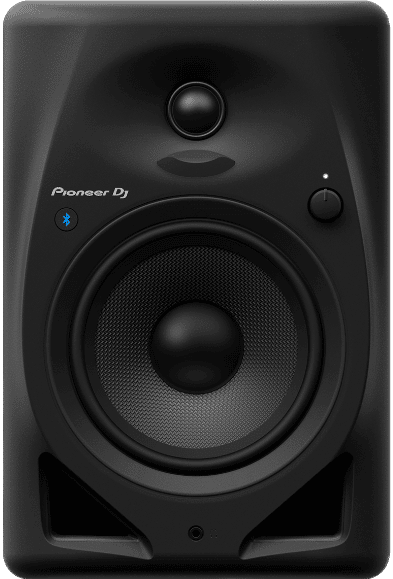 Pioneer DJ DM-50BT – £229.00/ 7.4KG (pair)
Pioneer DJ DM-50BT – £229.00/ 7.4KG (pair)
Pioneer DJ are the most successful “we’ve got everything you need” DJ brand. You can easily kit yourself out with nothing but their equipment and have all you need to run anything from a home studio right through to a club installation and everything in between!
These lively speakers are technically active but have an active-passive relationship, also known as a master-slave relationship. In this instance, the left speaker is the master. It has the power supply, the on/off switch, and most inputs and outputs (I/O). The right speaker mirrors everything from the master with the right side of the stereo image instead of the left. One speaker plugs into a power outlet and your DJ equipment whilst the other simply plugs into the master.
They have a clean, modern, angular design with minimal interaction at the front. There’s just a volume knob, a Bluetooth discoverability button and an eighth-inch headphone jack which cuts out audio immediately if engaged, a feature more valuable to producers wanting quick, A-B comparisons between headphones and speaker sound.
The DM-50BTs ship with a DJ / Producer mode toggle at the rear of the master. DJ mode turns up the bass response. Bass is delivered via a 5” fibre-glass woofer cone and is fired out of two front-facing ‘groove ducts’, which help reduce air friction to provide crisp, clean bass, even at higher volumes.
The speakers are rated at 25 watts RMS, perfect for filling a small to medium-sized room or studio. The frequency response of the speakers goes from 50hz-60khz, which is great if you’re also producing audio for dogs!
For DJs wanting to carry these to more intimate venues and gatherings, their weight is 7.4 kg combined, not including any padding or carry cases.
I/O on the DM-50BTs is comprehensive for their size, with an unbalanced RCA for connecting to DJ equipment such as a controller or DJ mixer and an eighth-inch jack for connecting to smartphones, tablets, computers and TVs. There are also balanced TRS jacks for connecting to professional-grade equipment and Bluetooth for mobile devices.
The speakers are available in black or white to suit the home environment. The included Bluetooth connectivity makes them a tremendous multi-purpose entertainment device for those who want to maximise their use.
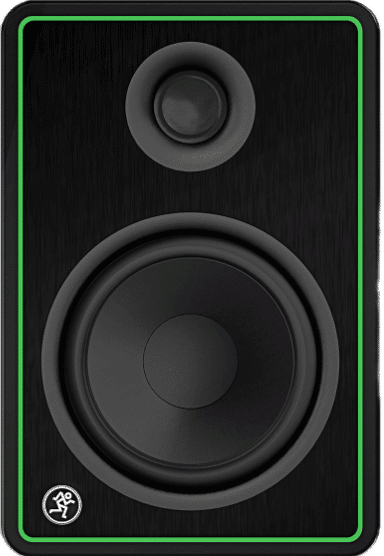 Mackie CR5-XBT – £170/ 6.8KG (pair)
Mackie CR5-XBT – £170/ 6.8KG (pair)
Mackie has a solid reputation for offering massive value in the world of speakers and monitors, and for a good reason! The CR5-XBTs are a great proposition, with almost identical features to the Pioneer DJ DM-50BT but at a lower cost. That makes them one of the best speakers for DJing when you’re still starting out in your bedroom.
Similar to the DM-50BTs, the CR5-XBTs are two-way active speakers with an active/passive relationship. Their design is minimal, with nothing but a power switch, Bluetooth toggle and volume knob on the front of the master. However, unlike the DM-50 BTs, either speaker can be positioned to the left or right thanks to a toggle found at each rear. This is great for allowing you to place the master in a position where it is easy to reach those controls.
Bass response comes courtesy of a 5” cone, and a rear-firing bass port. The RMS power rating is 80 watts, so filling bedrooms and small spaces with sound will be no problem.
They are enclosed in a wooden cabinet, which treats the sound well before firing it. Because of this, the speakers feel and look professional and sleek. The bass response is excellent in small to medium rooms, but if you need more, there is an official subwoofer accessory, the CR8S-XBT, costing £120. The additional subwoofer is designed to marry perfectly with these speakers, pushing them into the realm of house parties and small-to-medium-sized gatherings.
For those wanting to transport these to smaller gigs, their combined weight is more than manageable at 6.8 kg, plus any carry case, etc. The weight of the CR8S-XBT subwoofer is 4KG.
I/O on the CR5-XBT is exactly like on the DM-50BTs with unbalanced RCA ports and an eighth-inch headphone jack, plus balanced TRS jacks, which can be used to hardwire into the CR8S-XBT subwoofer. A soldered-on wall adapter powers the speakers.
Available in black with green trim or a limited edition white, the CR5-XBTs look just as great next to a computer monitor as they do flanking a DJ controller.
If you want to buy yourself a pair, use our affiliate link here.
KRK Rokit 5 G4 – £219.00/ 9.6KG (pair)
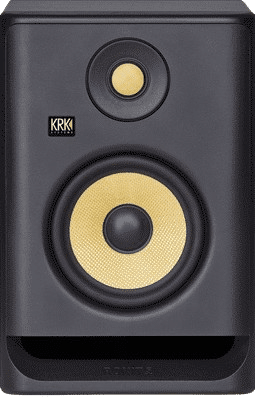 Cultural phenomenon! The yellow kevlar lining of the woofers is seen in studios all over the internet! It is proposed that this range of speakers rocketed into the stratosphere with the introduction of YouTube in 2005 and the subsequent floods of new exposure. Even with their reputation preceding them, some noteworthy features are worth spelling out. After all, the Rokit series has recently undergone an update; generation four, or G4, of the Rokit lineup has plenty to set itself apart from its predecessors.
Cultural phenomenon! The yellow kevlar lining of the woofers is seen in studios all over the internet! It is proposed that this range of speakers rocketed into the stratosphere with the introduction of YouTube in 2005 and the subsequent floods of new exposure. Even with their reputation preceding them, some noteworthy features are worth spelling out. After all, the Rokit series has recently undergone an update; generation four, or G4, of the Rokit lineup has plenty to set itself apart from its predecessors.
Like the other speakers in this category, the Rokit 5 G4s are 2-way active monitors. They have a kevlar-lined 5” subwoofer and a matching kevlar-lined tweeter from generation four onwards. This gives the entire sound great consistency as the bass, the highs and mids all go through the same material when travelling out of the tweeter and subwoofer, which is not the case with other speaker options.
Their rounded edges are another stand-out feature, which KRK claim makes positioning the speakers less of an endeavour. This is because traditional angular cabinets have high reflectivity of sound vibrations, meaning their placement affects the audio they produce owing to the sound reflecting from them differently in different positions of a room or environment. Less so with the KRK Rokits, thanks to their rounded edges, which minimally reflect sound. The KRK Rokit 5 G4 can be placed anywhere in the room and sounds practically the same! The same principle goes for the subwoofers, too. The entire Rokit G4 lineup has forward-firing bass ducts to stop walls or other surfaces from unnecessarily amplifying the bass.
Unlike the Pioneer DJ DM-50BT and the Mackie C5-XBT sets, each of the KRK Rokit 5 G4 monitors is active, so they have independent controls and I/O on their rears. The drawback is that you need more plugs for these as they’re independently powered.
For the mobile DJ playing small venues, these weigh 9.6KG collectively, the heaviest of the monitor sets looked at so far, but also the most feature-rich.
The stand-out feature to the rear is an LCD screen which displays the EQ settings. All settings are adjusted with the adjacent volume dial. A whopping 25 EQ presets are available to meet the requirements of all room types and treatments, including a bass-heavy setting for DJs who want to emulate the club environment.
The I/O caters for balanced inputs only, with an XLR and 1/4-inch input combo jack. That means you’ll probably need some sort of adaptor cable to use it with beginner DJ gear that’s got unbalanced RCA cables, but this isn’t a big issue. A universal IEC port powers each speaker, so no one should be caught short sourcing replacement cables if they are needed.
The KRK Rokits are readily available in the highly imitated black and yellow colour scheme but can also be found in white and yellow.
If you want to buy yourself a pair, use our affiliate link here.
Best DJ Speakers for House Parties
If you want to crank things up and show off your DJ skills at a gathering, you’ll need some bigger speakers to keep up with the power demands. This speaker category is not so clearly defined; you could just get bigger studio monitors to achieve great results. Equally, you could opt for some stripped-down club or mobile DJ speakers, whatever it takes to fill the space and account for the extra bodies absorbing the sound!
Speakers of this nature often ship separately rather than in pairs. They also come with bigger subwoofers to create room-filling bass. Most can also be accompanied by a dedicated external subwoofer, which is good if bass is your thing. Just don’t place the subwoofer too close to cabinets full of your precious fine china!
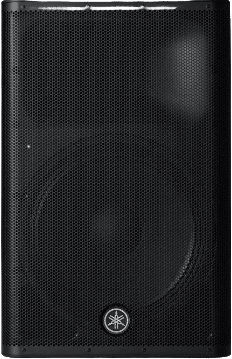 Yamaha DXR8 MKII – £499/ 12.8KG (per speaker)
Yamaha DXR8 MKII – £499/ 12.8KG (per speaker)
Small but mighty! The DXR8 MKII’s are active and sold separately. They deliver a high volume with outstanding sound quality thanks to their neodymium high-frequency compression driver, which creates crisp and clear high frequencies. For the bass, the 8” subwoofer cone packs enough punch to round the sound out, even in an outside setting with fewer walls to bounce off of and amplify from.
The speakers have a clean, professional look with nothing but a speaker grill and LED light visible from the front. To the rear, you’ll find many features, including a high pass filter (HPF) designed to remove low-end rumble from the bass, enabling the speakers to deliver an even cleaner sound. However, the HPF is intended to be used alongside an official companion external subwoofer, also available from Yamaha. The native 8” subwoofer cones deliver plenty of low-end punch to satisfy at house parties and the like, but it’s nice to know that the option for teeth-shattering bass is there should it be required!
There are three EQ presets: ‘Front of House’ (‘FOH’), which boosts the bass to deliver the sound a musician or DJ would expect from a speaker in concert. ‘Off’ turns off any EQ boosts to give a decently balanced noise image, and ‘Monitor’ puts the speakers into a flat EQ curve for producers.
The I/O of the DXR8 MKII has coverage for unbalanced line input sources with RCA jacks and for balanced input sources with TRS and XLR jacks, plus an XLR thru jack to marry the speaker with a companion to make a complete left/right stereo arrangement. Each input source has its own volume control, and the speaker features a fully comprehensive overload circuit to prevent damage. A universal IEC port powers the speaker to make things easy if a cable is lost or forgotten at a gig.
Coming in at 12.8KG each, the DXR8 MKII may be small but is certainly not light, a consideration to make for the mobile DJ who has to carry their gear!
The high cost of the DX8 MKII can be appreciated as they are so small yet deliver plenty of high-resolution audio. Chosen by professional musicians and DJs alike, they are a safe choice and deliver sound far beyond what their size would suggest.
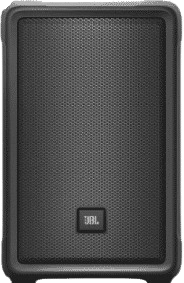 JBL IRX108BT – £299.00/ 7.9KG (per speaker)
JBL IRX108BT – £299.00/ 7.9KG (per speaker)
JBL offer up their take on the small but mighty box. With an impressive market share of domestic audio products, JBL is a trusted name within the industry. These speakers have been tuned to deliver remarkable performance in both outside and inside spaces, perfect for providing full coverage to large gardens or even for filling small to medium-sized halls, let alone living rooms!
The IRX108BT is two-way active and sold on a per speaker basis. Simplicity is a key theme throughout, starting with the speaker’s look. It is minimally clean, showing just a grill baring the JBL logo face on and has rounded edges with grab handles to the left and top of the speaker. Portability is built into its DNA! With Bluetooth 5.0 connectivity and the ability to run on battery power, they can double up as portable speakers for parties on the beach or anywhere!
EQ controls are simple but effective with an additional bass boost feature which drives the 8” subwoofer cone harder to give an authentic club sound. The four preset modes are ‘Music’; ‘Vocals’, ‘Speech’ and ‘Flat’. Each mode provides a strikingly different response and is all that’s needed for DJ use. Feedback suppression is a handy additional feature, perfect for peace of mind when giving a public announcement. Note, for this feature to work, the microphone must be plugged directly into a speaker, not a mixer or controller.
The I/O consists of 2 XLR/ TRS combo jacks, each with independent volume control, and an XLR thru feed for linking to a sound system. A universal IEC port powers the speaker, and the internal battery is also charged this way.
Each speaker weighs just 7.9KG, making them a desirable proposition for mobile DJs.
The IRX108BT is in a unique lane, fully competent to fill small venues whilst doubling up as a powerful yet relatively lightweight portable party speaker. The value proposition is hard to match!
If you fancy a pair of these, check our affiliate link here.
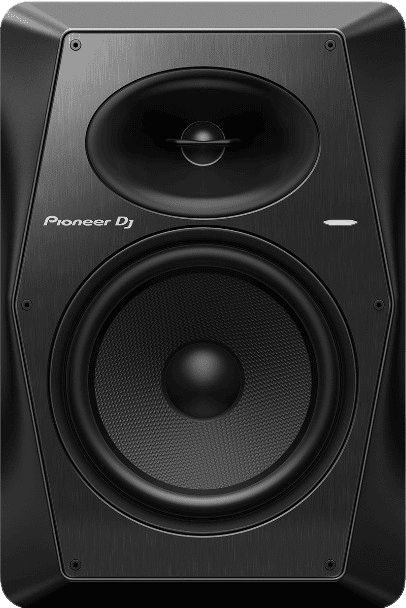 Pioneer DJ VM-80 – £290.00/ 9.7KG (per speaker)
Pioneer DJ VM-80 – £290.00/ 9.7KG (per speaker)
Another Pioneer DJ speaker! No surprise when you take into account that their parent company, Pioneer, specialise in making high-quality club installation speakers. Engineering from the club speakers has been passed down, giving the VM-80 a lot to be sung about!
The VM-80 is two-way active and sold individually. It has two sets of four EQ modes split between the tweeter and 8” woofer. Its ‘Flat’ mode for producers is impressive, but the authentic deal-sealing sound happens when the subwoofer EQ pot is dialled to ‘Club Bass’ and the tweeter EQ pot is dialled to ‘Bright Treble’. With this arrangement, your house party is transformed into a mini club; the bass gives a satisfying kick and the treble sings alongside in harmony with no loss of resolution at high levels. The VM-80s are measured to kick out up to 115dB of volume!
The I/O consists of a balanced XLR/TRS combo jack, unbalanced RCA port, and universal IEC port that powers the speaker. With everything seeming to be in order, at 9.7KG per speaker, the relatively heavy weight is a definite consideration for this speaker size.
Excellent at catering for both DJs and producers. Although they are better for DJs, they make a perfect choice for DJ/ producers wanting to share speakers for both tasks.
Speakers for mobile DJs
Typically catering for audiences numbering in the 100s, speakers for weddings need to be able to drown people in sound; otherwise, they risk being drowned out by the volume of guests! Packing a whopping bass also helps, as big audiences love it!
Transportability is critical with this category of speaker, so they are often referred to as portable by the manufacturer and will have carry handles fixed to their cabinet’s sides, tops, or both. Most will also be pole mountable and will happily sit above an external subwoofer, not that one will be needed for most use cases as the internal subwoofers put out powerful bass.
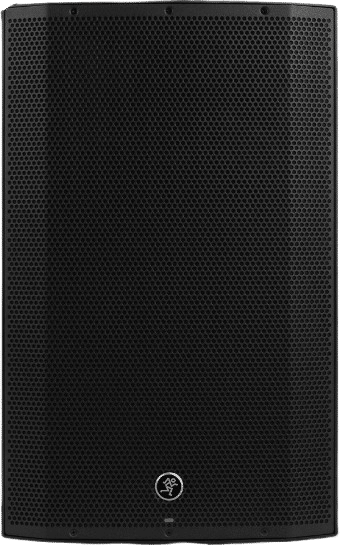 Mackie Thump 15A – £379/ 15.8KG (per speaker)
Mackie Thump 15A – £379/ 15.8KG (per speaker)
With a name like Thump, you know Mackie means business with this speaker! Found at music concerts and festivals alike, Mackie’s Thump brand has become synonymous in the world of PA systems.
The Thump 15A is 2-way active and sold separately. The 15” subwoofer cone is the not-so-secret ingredient that gives this speaker its thump! And with 1300 watts of RMS power, the Thump 15A goes loud without losing clarity or crisp, tight bass. But, if you want it glass-shattering, simply pair it with the Thump 18S 18” 1200 watt active subwoofer and watch any non-secured dance floor slide away!
The EQ control on the rear is simple but effective with four modes, all shaping the sound in drastic ways. The ‘Music’ mode will suit most DJs as it boosts the lower frequencies with the perfect balance to not muddy the sound. The sound shaping of the different EQ settings is visualised with frequency illustrations on the rear panel.
The I/O of the Thump 15A consists of two XLR/ TRS combo jacks and an XLR mix-out feed. Both of the inputs have dedicated volume control. The speaker is powered by a universal IEC port for flexibility and peace of mind. At 15.8KG, the speaker is relatively lightweight in class but still requires a game plan for transportation.
The Thump 15A is a no-nonsense value-for-money proposition. For additional features such as an app-controlled EQ setting, Mackie sells the higher-priced Thump 15BST.
Grab yourself a pair with our affiliate link here.
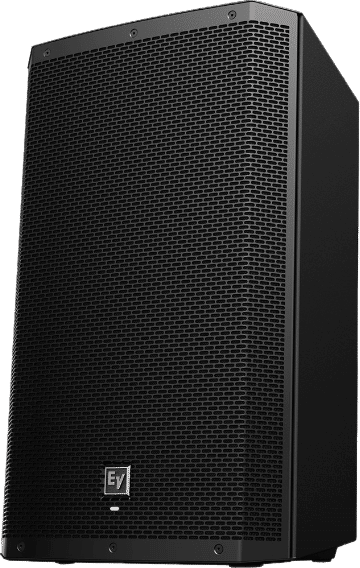 Electro-Voice ZLX-15P – £495/ 17.3KG (per speaker)
Electro-Voice ZLX-15P – £495/ 17.3KG (per speaker)
They are trusted almost unanimously by mobile DJs, Electro-Voice, or EV, as a brand is top of its game in the portable speaker sphere. The ZLX-15P active speaker is 2-way active and sold individually. In common with the Mackie Thump, it is designed to operate to a loud volume with the competence not to need an external subwoofer owing to its own 15” internal cone. Again, like with the Thump, an additional subwoofer is always welcome if the occasion calls for it.
The EQ and other speaker settings are taken care of with an LCD screen and rotary dial found on the rear panel. With plenty of choices for sound sculpting, the speaker has been crafted with all environment types in mind. With 1000 watts of RMS power, it is sure to go loud enough in large areas without compromising sound quality and fullness. The front panel grill is durable 18 gauge steel and has a clean, sleek look, much like the Mackie Thump 15A. The ZLX-15P feels sturdy yet light enough for transportation and has a noticeably more well-rounded sound with a slightly cleaner, crisper bass response compared to the Mackie Thump 15A.
I/O consists of two balanced TRS/ XLR combo jacks flanking an XLR mix-out port for marrying speakers up. A universal IEC port powers the speaker. At 17.3 kg per speaker, it has real weight, so it will need careful transportation consideration.
The Electro-Voice ZLX-15P is an industry-standard speaker choice which is yet to disappoint.
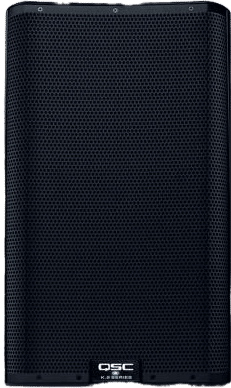 QSC K12.2 – £899/ 17.7KG (per speaker)
QSC K12.2 – £899/ 17.7KG (per speaker)
The QSC K12.2 is the second iteration of a top-rated speaker, the K12, known for giving rich, full-bodied sound even at peak volume. Everything about the K12.2 is premium, from the drivers and components holding it together to its cabinet and 18 gauge steel speaker grill, now lined with an updated high-tech mesh for better blocking natural elements. The K12.2 has plenty of little improvements that add up to a big difference over the K12 original.
The design is perhaps the most professional looking of all the speakers reviewed so far, with nothing but a black, beautifully chamfered steel grill bearing a small QSC logo and LED function light visible to the front. At the speaker’s rear, there are plenty of features to get stuck into.
An LCD screen displays speaker settings such as driver volumes and EQ, of which plenty exist. Another update to this iteration over the K12 is how the speaker manages its power to deliver a more robust sound. Now the subwoofer gets 90% of the watt power drive, and the tweeter gets 10%, as opposed to the 50/50 arrangement of the original K12, resulting in a much more powerful sound. New tweeter drivers and technology mean that even with less watt power driving them, the highs are crisp, clear and not muddied by an overpowering bass.
The I/O consists of two combo XLR/TRS jacks, two XLR jacks, and an additional XLR jack giving a Post-Gain Outfeed. The speaker is powered by a universal IEC port and weighs a whopping 17.7KG.
If it is a fully premium speaker that you want, the K12.2 will be a rock-solid investment. One which QSC is confident of that they ship it with a 6-year warranty!
Check out our affiliate link here if you fancy buying yourself a set.
How to Choose the Best DJ Speakers for Your Needs
As with other bits of technical kit, choosing speakers can be hard to navigate, but this process is simplified once you’ve decided what aspects best lend themselves to your requirements. You may want your speakers for a specific room, or you may want them to compliment an existing set-up or to perform more than a single task. Manufacturers understand this and many speakers have preset EQ settings to deal with various workflows and environments. However, it is best to keep in mind your primary needs as all speakers have specific strong suits that align with what is best for you.
Getting the right sound, look and feature set from your speakers is a worthwhile investment. If you are starting DJing and this is your first set of speakers, our picks from the studio monitors, such as the Mackie CR5-XBTs, are a great place to start.
Choosing the right speakers will elevate your sound, whether you’re a beginner or a professional. Think of them as the couriers of your music; they either deliver it in good condition or distorted!
Ready To Learn Some New DJ Skills?
Check out our range of DJ courses below if you’re ready to take your mixing to the next level. With everything from beginner to advanced across various DJ software and hardware, there is something for everyone!
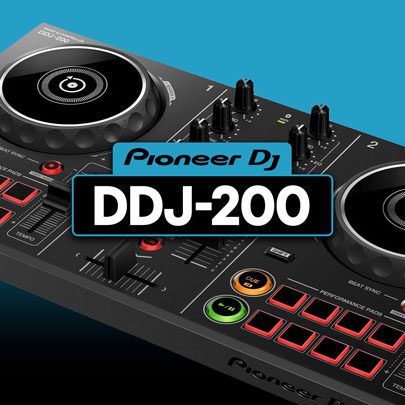
Pioneer DJ-200 DJ Course
4.75 hours
28 lessons
Beginner
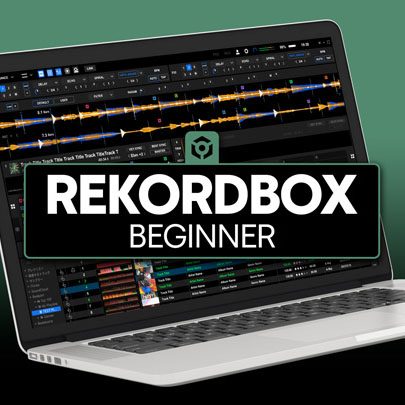
Rekordbox DJ Course
5.5 hours
37 lessons
Beginner
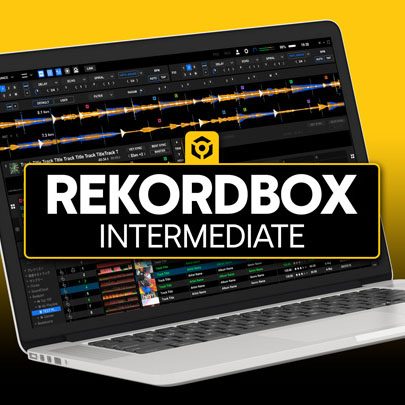
Rekordbox DJ Course
7.5 hours
49 lessons
Intermediate
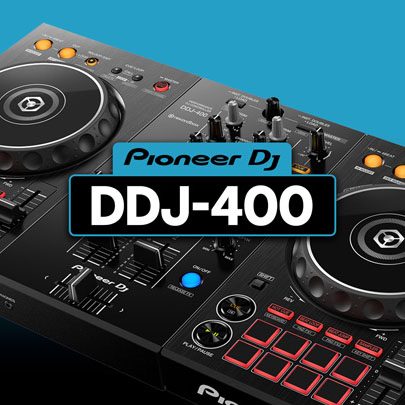
Pioneer DDJ-400 DJ Course
7 hours
30 lessons
Beginner
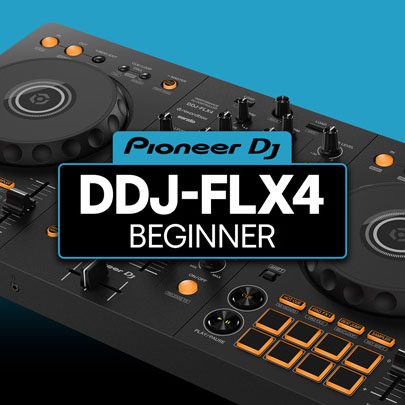
Pioneer DJ DDJ-FLX4 Course
7 hours
41 lessons
Beginner

Complete DJ Package
835 hours
1300+ lessons
Creative
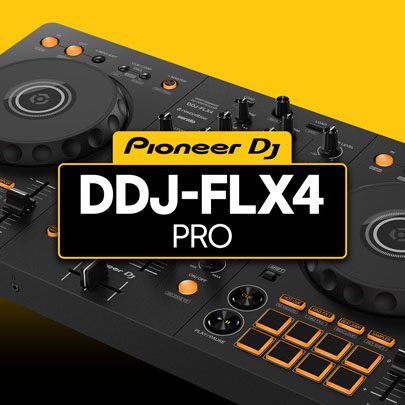
Pioneer DJ DDJ-FLX4 Pro Course
9.5 hours
49 lessons
Intermediate
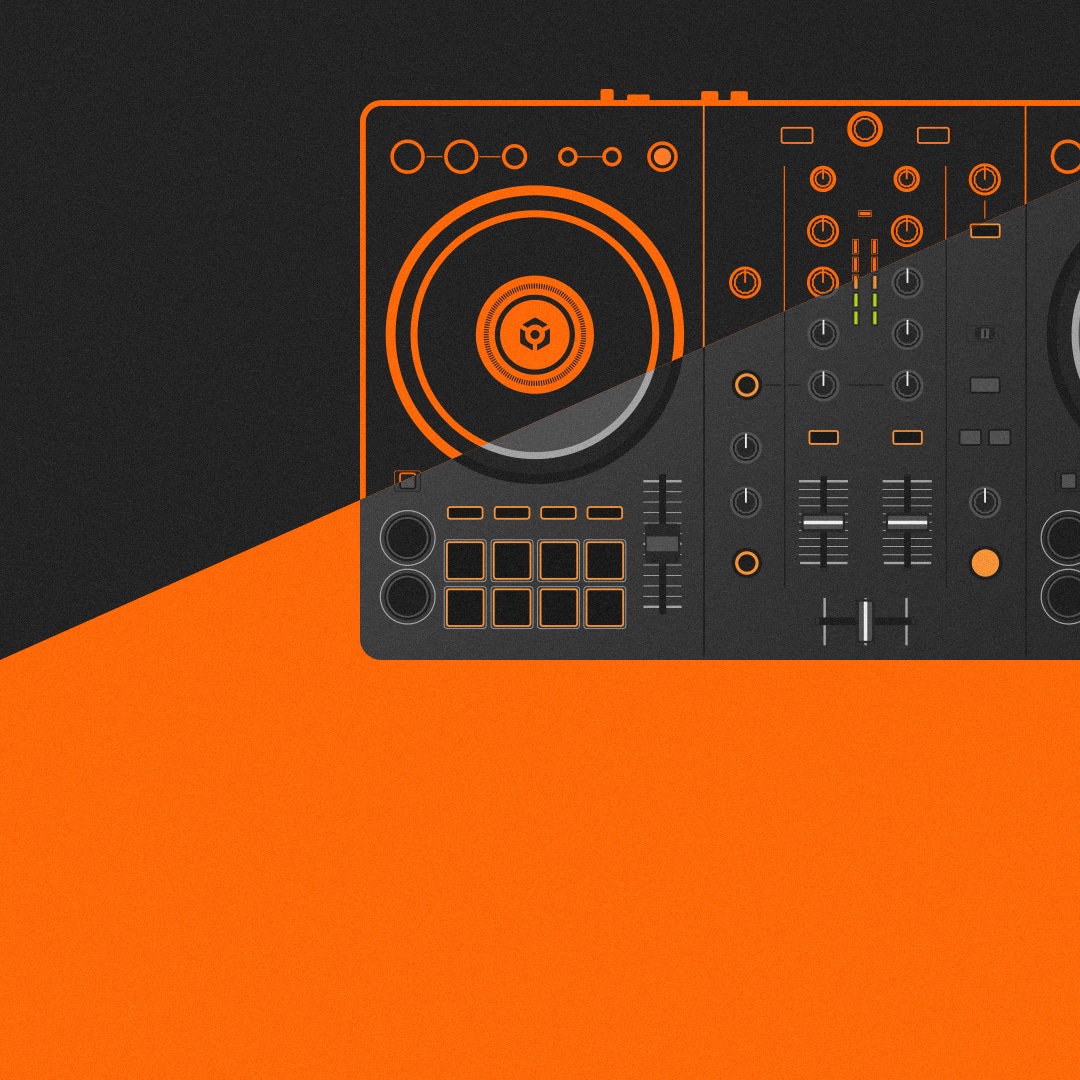
DDJ FLX4 Beginner To Pro Bundle
16.5 hours
90 lessons
Beginner

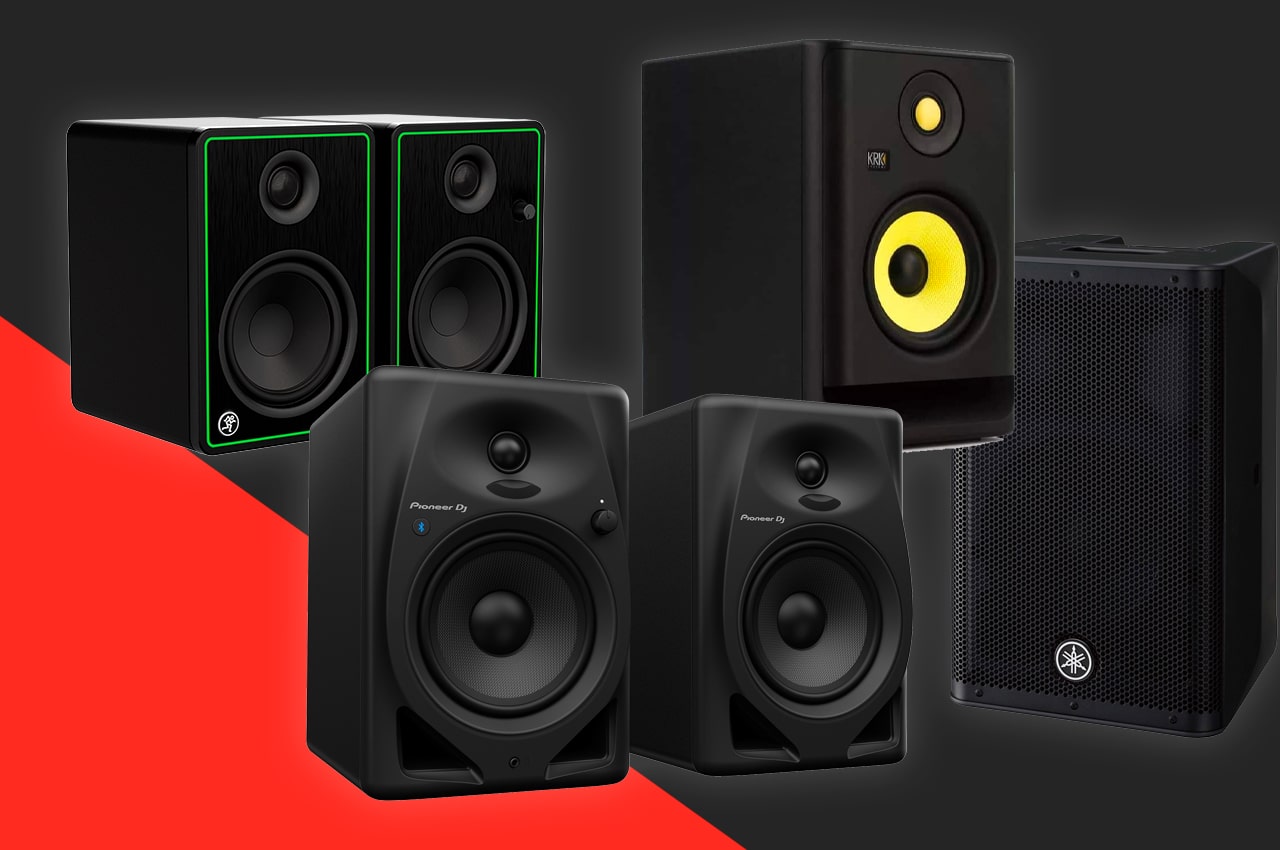
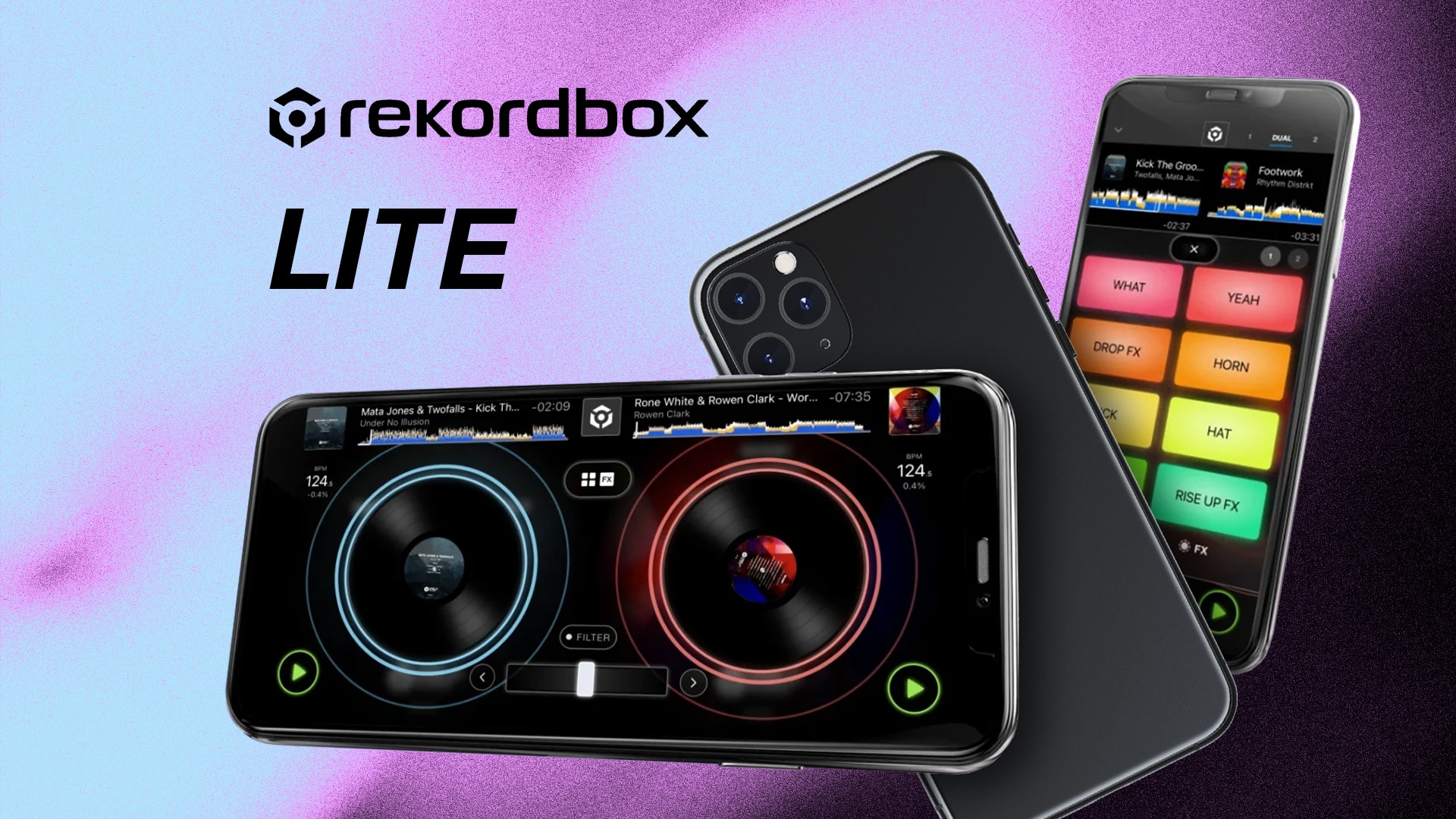

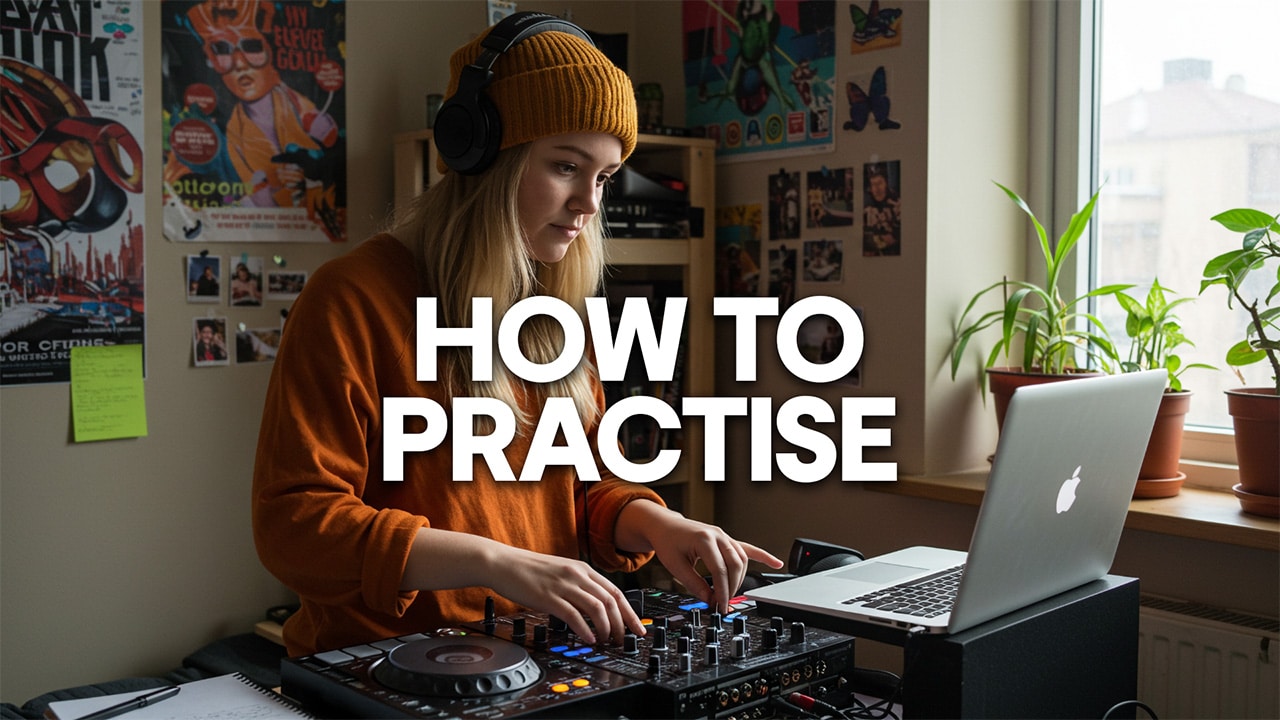
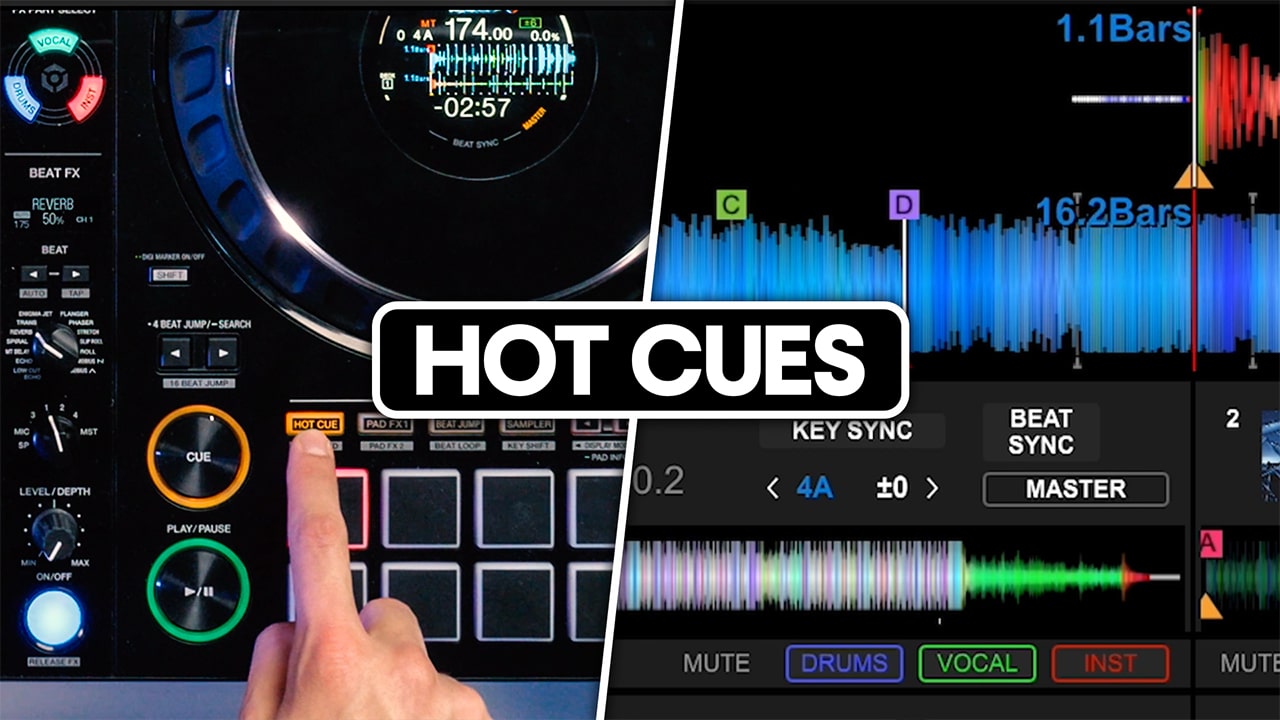

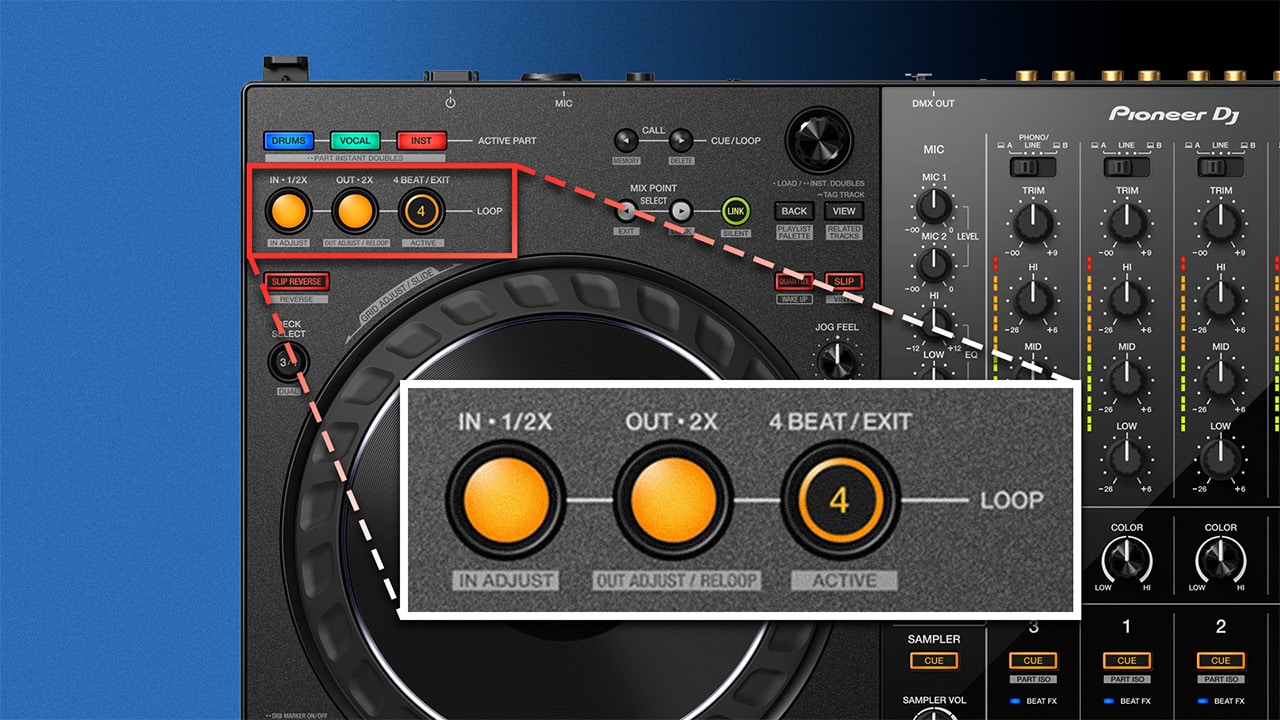
I was looking Best Dj Speakers for Home when I Came Across on your post, Awesome you’ve reviewed all the Best Dj Speakers in details and your post helped me a lot.